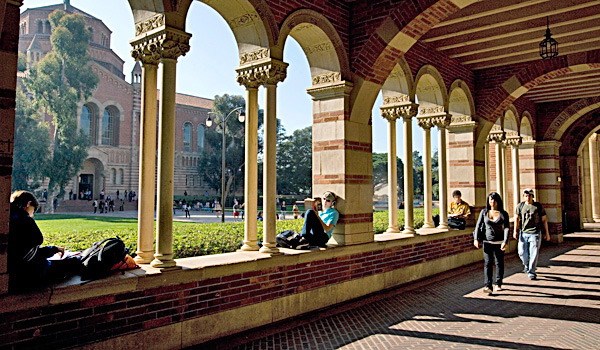The big news in the Los Angeles market for Executive MBA programs is the arrival of a new prestige player in August of 2012: the University of Michigan’s Ross School of Business. The school began accepting applications to its first remote EMBA program in January and expects to enroll between 35 and 50 students in the inaugural class.
The Michigan program will cost more than any other offering in the L.A. metro market–at $136,000 a pop, it’s some $22,000 more than the two other elite EMBA programs in Los Angeles at UCLA’s Anderson School and USC’s Marshall School. And the Ross School is going up against at least a dozen other well entrenched EMBA experiences in the L.A.-San Diego area. Ross Dean Alison Davis-Blake chose L. A. over other cities to launch the school’s first remote EMBA program because of both the size of the market for mid-career executives without MBA degrees along with the number of University of Michigan alumni in the area–some 23,000 in Southern California alone.
The launch will add to the diversity of options for executives in the L.A. market as well. Unlike most of the other programs which tend to meet twice a month on alternating weekends, the 20-month Michigan program will require student-executives to meet for class only once a month starting Friday morning through Saturday afternoon at the ultra-swanky Beverly Wilshire Hotel in Beverly Hills. The program, moreover, will feature the school’s signature course, a so-called “Executive Multidisciplinary Action Project,” that brings together teams of students with companies in a four-month consulting project. At times, the school says, students in both the Ann Arbor and L.A. cohorts will convene in the same location and collaborate on coursework.
Mid-career managers and executives in this area already are the beneficiary of one of the most compelling offerings of EMBA programs in the world, at all kinds of price ranges, locations, and start dates. Many schools offer unusual twists like Michigan’s ExecMAP projects that show a good deal of innovation in the space. Chapman University’s Executive MBA program, for example, offers students eight sessions each academic year with an executive coach to help provide career guidance and counsel.
The school also hands all students Apple iPad2s when they enroll in the EMBA program, with electronic textbooks and case studies for each class loaded into the tablets. Chapman also provides tutors to students for some of the more challenging courses in finance, accounting and economics. As if this isn’t enough, the $83,790 tuition includes all accommodations and meals for three off-campus residential sessions to San Diego, Asia, and Washington, D.C. Recent classes have gone to China and Vietnam to visit factories, meet with government officials, and executives of the international operations of such companies as Levi’s, Boeing, and Bank of America.
How do the L.A. metro programs generally stack up against each other?
- The most selective of the programs in the market is San Diego State University’s EMBA which accepts only 63% of its applicants.
- The rankings leader also is UCLA which is ranked sixth best in the world by Poets&Quants followed by the University of Southern California’s excellent program which is ranked 11th.
- The least expensive Executive MBA program is offerred by San Diego State University and priced at a very affordable $48,960–roughly $25,000 less than the average cost of these programs and $87,000 lower than the most expensive program, the University of Michigan’s new EMBA program in L.A.
- Claremont Graduate University’s Drucker School program has the highest percentage of women of any EMBA program in the market–45%–as well as the oldest crowd of EMBAers at an average age of 42.
- Which program has the highest earning students? That would be USC’s Marshall School EMBA with the latest entering class earning an average $172,000 a year.
- UC-San Diego in La Jolla has the most students who already boast advanced degrees–48%.
- The shortest path to an Executive MBA degree? Claremont’s Drucker School says an executive can complete its requirements in as little as 18 months–or as long as seven years–depending on your professional and personal demands.






Questions about this article? Email us or leave a comment below.